Streak Club is a place for hosting and participating in creative streaks.

This is a typing word game, which played in a time trial challenge style, is designed to improve a player's touch-typing ability (typing without looking down at the keyboard). It is played on mobile tablets using the touch screen keyboard, which is modified to provide the core mechanism, which drives the challenge of this game.
As a player progresses, key labels on the touch keyboard, are temporarily blacked out, covered, or swapped around. This is done in a frequency relative to the difficulty level, starting with minor changes such as blacking out only a few, to a completely obfuscation of every letter. The purpose is to display the shape of the keyboard, but encourage the player to commit key locations to memory.
The time trial element is used as a catalyst in support of this, putting the player under pressure to increase typing speed. Players start from a countdown timer of 60 seconds where they are prompted to correctly type the words that get displayed using a keyboard displayed on screen (resembling the common keyboard interface on mobile devices). Players must do this without deleting or back tracing. Every word typed out successfully awards them a point for every letter and a time extension, and mistakes penalize you with a reduction in time.
Feedback is given to the player in sound, text, and effects. As well as the score, players also see a real-time calculation of their current progress' words per-minute. An increasing bonus multiplier rewards points for successful words achieved. A fast-paced sound score re-enforces the pressure of the time constraint.
Platform: Mobile devices for Android and iOS.
Target Audience: Teenagers 13 years up to adults.
Reference Images:
'City Litter' is a single player RPG where you play as a stray mother cat, on a search for her missing litter of kittens through the streets of a sprawling city metropolis.
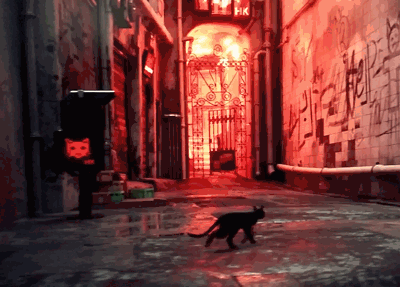
You were out foraging for food when the city pound invaded your litter of kittens and took them away. As an animal there is still the scent from their captors, so without any time to waste, you must travel beyond your stomping ground in order to bring them home.
Players plays this game from a third person view, and see our world from the height of an animal. Controls come from the familiar format used for RPG games using game controllers (such as GTA V). Player characters interact with environments that intuitively recognizable for cats – climbing ledges, sneaking up on prey for food.
There are many predators – animal and human that you must avoid.
Unique to this game, is the absence of any dialogue. Although the player interacts with the world and other NPCs, information is communicated largely through visual cues (highlighting and pointing markers to places of significance).
'Scent', a core mechanic in the game, is represented in-game with the use of colour. This is something that is taught early in the game, and is a dynamic players get accustomed to very quickly.
Examples of this, would be different overlaid shades of green to indicate nearby food sources, and shades of red which get brighter to signal nearby or approaching predators.
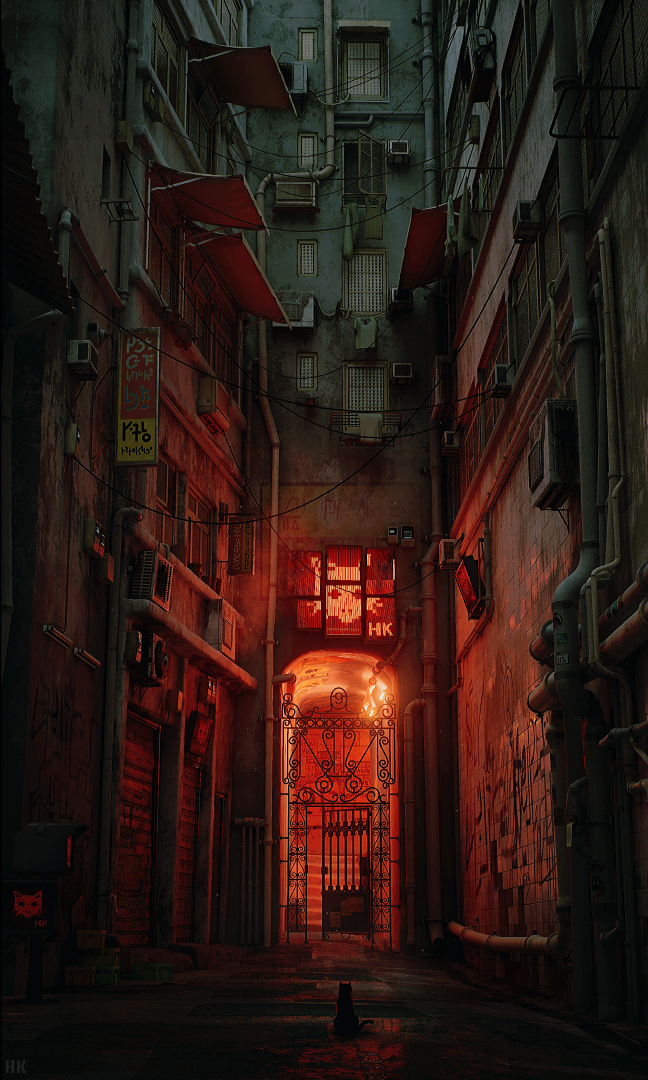
There are side missions to accompany and deepen the main narrative. Completing side missions give you points that can be spent on a skill tree where to acquire skills to make you more agile, stronger, and stealthier. For instance:
The approach to the feel of 'City Litter' is comparable to Wall-E, players build a connected and personify a non-human character.
Platform: Gaming consoles – Microsoft Xbox One, Play Station 4
Target Audience: Mature audiences ages 13 years and older.
Reference Images:
https://hk-devblog.com
A game where players interfacing with a camera, and using a Shisha or vaping device, blow O-rings and perform other technical tricks to score points on their technical ability and control.

'O-Day' is a gamification of 'smoking tricks' - controlling the smoke blown, and helps players develop greater control and technique in a fun and challenging way.
Rules:

O-Day uses the webcam to identify the smoke blown by people and track them on the screen in real-time. This is done by recognition of the colour and movement of smoke interpolated over time.
Platform: Desktop for PC/ Mac, using a webcam.
Target Audience: R18, for adults 18 years and older.
Reference Images:
http://makeagif.com/caec0Ahttps://jackcalis.com/
A music driven game (similar to the genre of Dance, Dance, Dance, Revolution), where players using their bodies, follow on-screen directives to complete dance moves of the style, finger tutting.

'Finger tutting' is a type of dance that involves intricate movements of the fingers. The word "tutting" is a street dance based on angular movements done in sequence and combinations.͚
Finger Tutting͛ uses the Xbox Kinect camera to register human hand, body movement and speed. The TV projects their image, along with superimposed lines and geometry, acting as prompts for player movements to mimic. Thegame is heavily music-driven, so following in time are songs (mainly of the electronic and hip hop genre) that typically reflect the tutting intensity pace, combos.
Players control the game predominantly with their hands, but body position is included as the level of the difficulty increases. Points are awarded based on:
The hip hop sub-culture of finger tutting has a wide community of promoters/ followers, and a large part in the game creates value by featuring recognizable moves and combos from these famous stars. The same cue is taken with the inclusion of currently popular songs that exist in this sub-culture. Pop culture plays a large factor in this. Following along with popular songs, mimicry of high end moves is a meta element to creates a very attractive unique selling point (USP). This USP is similar to that of Sing Star and Guitar Hero.
Though predominantly single or two-player, there is scope to accommodate split-screen online competitive gameplay.
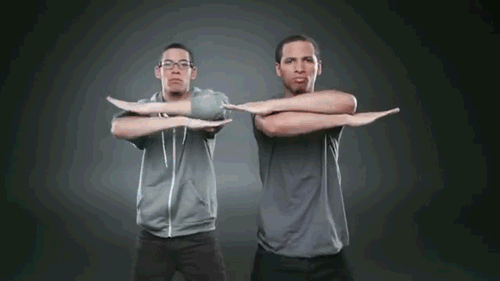
Platform: Microsoft Xbox, with Kinect camera
Target Audience: Teenagers aged 16-24 years old.
Reference Images:
Mosaic is a puzzle-based time attack where players watching blurred images, guess the name, subject, and answer other questions about it, done under a pressure of time.

In starting a new game, a player encounters a heavily distorted image. A countdown begins from a predetermined amount, and the picture proceeds to un-blur, growing sharper in fidelity and contrast, until the original image is visible again. Players have until the time runs out to answer questions concerning the image's specific details. These questions typically reflect:
Each level loads a different image, which progressively becomes more abstract and specific, covering esoteric or advanced questions. For instance, fine art paintings with advanced questions normally relegated to armchair theologians with specialised knowledge.
You are awarded points based on how many questions you answered. The point scale multiplies and rewards you the more questions are answer, effectively being a measure of how well and quickly you can discern the blurred images.
The inspiration behind this game is from the use of Captcha. Captcha verifies against bots (non-human users) by getting them identify augmented words and letters in images. As well as this, this is used to aid a deep learning algorithm is optical recognition of printed text.
This game applies the idea of gamification, to crowd source the info for machine of software to understand images in a more intuitive sense – for instance emotional nuances, wider context (two people getting married at a wedding), further to objective and literal details (tree, man, woman). Ultimately, this presence a novel way to develop Artificial General Intelligence (A.G.I.).
Platform: Desktop platform using Facebook as a medium
Target Audience: Young adults 18 years and older
Reference Image:
http://thedsgnblog.com
A single player RPG game for PC/ Mac Desktop involving puzzles, where players using their hands, virtually reassemble broken artefacts, to uncover the story of an ancient civilization.
You play as an archaeologist, and you are at a site of an ancient civilization - recently unknown up until now. Very little is known about the people, how they lived, or what brought about their inevitable demise. The only clues you have are from the broken pieces of relics that you are uncovering.
They are broken, but not irreparable, and your task is to carefully put the pieces of the relics back together.

Using hand gestures through the magic leap, manipulate the pieces in virtual 3D space, reattaching each piece as they become available:
If the piece is correctly fits, it will stay in place, and each piece reassembled unlocks a part of the story.

This game is designed to promote science and archaeology (for children), and to be a sociology thought-piece (for adults). The completion of artefacts is meant to create a palpable feeling of closure, and the story uncovers, players feel the significance and connection between the narrative and the artefacts they reassembled. The themes for the game take cues from human philosophy and sociology, proposing that given human nature, history tends to be cyclical.
Platform: PC/ Mac Desktop, using Magic Leap.
Target Audience: General audiences - children and adults alike
Reference Image:
http://www.thisiscolossal.com/2014/05/kintsugi-the...
A VR simulator where you guide a person making a vase on a pottery wheel.
You have recently passed away in an untimely death, having left behind your lover and now exist as a ghost.
It really was unfortunate - having splurged big to get her that device she always wanted, only to find your girlfriend is unbelievably uncoordinated. Now you are gone, it weighs heavy on you seeing her in such a pitiful state. So much so that you have one last task to complete before you can truly move on into the afterlife - help your uncoordinated lover master the art of pottery.

Players start each level inside an art studio with a picture of a vase that your girlfriend would like to complete.
Standing behind her and using the handle controls for the Vive, guide her hands as the wheels turn, helping her complete the vase. This is no easy task - the speed of rotation, the right amount of water to avoid the clay getting too soft or dry, this takes a lot of control and artistic flair - several things your girlfriend lakes severely.
Help her complete the vase before 'unchained melody', by the Righteous Brothers, playing in the background finishes.

This game is modelled after real-world physics of pottery, so players can get a real sense of what it is like. Every level, the vases get more detailed and complex. Complete the tasks and finally be able to move on into the afterlife.
This game isn't about love, or ghosts - it's about hand eye coordination.
Platform: HTC Vive for PC Desktop
Target Audience: Young adults aged 18 years or older, and anyone who has seen 'Ghost'.
Reference Images:
http://giphy.com/gifs/maudit-lol-maudit-ghost-frKd...
http://giphy.com/gifs/ghost-pottery-sexier-SrkgwDs...

You are a ninja in todays day and age, where technological advancements are essentially rendering your occupation and way of life obsolete. Paid assassinations come fewer and far in-between, resulting in a desire for a career change. Fortunately, there's an always-available occupation that perfectly suits your particular set of skills - handing out flyers on the busy streets of the city.
Unfortunately, it is difficult for busy people to notice you when you've trained your whole life to be stealthy, so you devise a strategy - deliver flyers to unsuspecting passers-by in typical ninja-like fashion.
Players must navigate their way around busy metropolis blocks, approaching pedestrians and cars to deliver discount coupons and flyers to retail stores. You start off with a marginal ability to blend into backgrounds and climb stuff. As you progress, your experience points earned allow you to learn and develop new abilities in the skill-tree system. For instance, ninja-star throwing DLE flyers accurately into handbags and back pockets; or super speed, making the world move in slow motion as you dart around doing your job.
Now, as sweet a plan as it sounds, some folks may frown upon your way of doing things, so be careful as to not to be caught in the act. Getting caught too often will cause pedestrians to call the police, and/or fight you themselves - and that just won't do, cause your a spam ninja, with stealthy skills and a quota of flyers to fill, so be brave and be careful.
Platform: PlayStation 4, Xbox One - using a typical gaming console controller
Target Audience: General audiences, all ages 10 years and older.
Reference Image:
https://drawception.com/game/Ot11waYO12/thief-has-...
A barista simulator for mobile devices. Players create 'latte art', the patterns formed with the mixing of the frothed milk and extracted coffee into the cup.
This game is designed as a realistic simulation of the coffee making process, with a unique selling benefit of players gaining some knowledge of how latte art is achieved while playing. The effects of gravity, temperature, density and characteristics of liquid is replicated to create a sense of realism - baristas should attest to the behaviour as being close to the real thing.

Real coffee types are used, as well as players being able to select different ground types - these help build a players understanding of effects on coffee colour, contrast, ease of pattern-making, and the overall effect on the coffee (bitterness, mellowness, aftertaste).
Game Rules:
The combining aspect is the core aspect of 'Latter Art'. Players are given a top-down view of the coffee cup (resembling how this is carried out in real-life). Using one hand to balance the device, the other hand simulates the 'pouring' of the frothed milk. The devices' accelerometer is used to simulate balance and reinforce the need for control, while pouring the milk is simulated by touching the screen - indicating this is where the player wants to pour the milk.
Players have until the coffee cup is entirely filled - go over cause spillage, which is bad. Players are graded on parameters:
Designs can be submitted online through social media photo sites, such as Facebook, Instagram, Flickr, as well as footage through Periscope. This overall, contributes to the aspect of promoting and learning a pliable skill through gamification.
Platform: Mobile devices for Android and iOS
Target Audience: Teenagers 16 years and above
Reference image:
https://www.buzzfeed.com/lanesainty/15-gifs-for-ba...
Sandwich Maestro is a vibrant and whimsical puzzle-solver for single-player, where players construct sandwiches to order, following constraints of customers orders, available ingredients and recommended dietary constraints - all to the rhythm of kooky-slapstick music, eye-popping colors and modular graphics.
The game is played on desktop platforms (Windows/ Mac OSX), using a typical mouse and QWERTY keyboard. The display shows a production-line style game screen showing sets of 'orders' that need to be filled.
![]()
Each order consists of a particular burger with possible parameters that could be:
For each set you have a limited inventory of ingredients available to use in that particular set. Some sets require all ingredients to be used inthe entire set, while still fulfilling every other requirement. Ingredients are what you typically find in a burger (breads, meats, salad/vegetables, pickles & toppings). Ingredients are uniquely defined by the following:
On top of this, game rules add the constraint that no two of the exact ingredients can be stacked consecutively.
The purpose for the game is to use the ingredients at your disposal to fulfil each order, and to see how many sets you can complete. This is no time limit, as Sandwich Maestro approaches gameplay like a jigsaw puzzle solving problem. Players will find as they progress, sets become more challenging, with more constraints to comply with, more/less ingredients, specific height specifications.
Platform: Desktop PC/ Mac
Target Audiences: Children aged 7 year sand specific
Reference Image:
http://www.titanui.com/46547-flat-burger-icons-vec...
A time-attack puzzle game, where players take a word and using swipe gestures, eliminate letters to break down and form newer words.
The environment is in the style of Tetris, where players see upcoming words coming up, make decision, with the purpose of scoring the highest amount of points at a chosen difficulty level before the time runs out.
With each word, players have the following moves available to them:
Players are scored by the accumulation of points made within the allotted time. The points given at each 'tier' – the amount of different words have been submitted, the accumulation follow a points multiplier system, which begins at 1 point, and doubles for every successfully submitted word. A new word resets the multiplier to start again at 1 point.
When a word is submitted to the next tier by swiping down, if a word does not exist, the accumulated points will be lost, and a portion of your available time is taken away.
There are increasing levels of difficulty, reflected in the difficulty of words, that would typically be more unfamiliar; and how many upcoming words can be seen in advance.
Platform: Mobile devices for Android and iOS.
Target Audience: All ages/ general
Reference Images:
https://dribbble.com/shots/2348248-38-free-gesture-icons
A VR game for HTC Vive where you score as many high fives as possible from a crowd of people, and using body language to discern and avoid any 'awkward' moments.
You play as a somebody in a crowd of people. Something has just happened – we aren't entirely sure, but at the furore from the crowd being the signal, using the Vive controls and moving around to identify high-five targets, you have until the crowd energy dies down to collect as many high fives as possible.
Here's the catch – obviously something ridiculously awesome has occurred, which also means cameras and paparazzi are abundant, and in this day and age, one bad move could go from social celebration, to a meme that will haunt you as long as the internet remembers.
For instance, this guy...

Or Miss Popular here:

Not even money and talent could save you:

But being too enthusiastic, may turn you into this guy:

Platform: HTC Vive for PC/ Windows
Target Audience: Ages 16 and older
Reference Images:
http://mashable.com/2014/06/11/high-five-lef-hanging-gifs/#_9yw2ke3vuqY
http://imgur.com/gallery/T8n40
'Thin slicing', is the human tendency to draw large conclusions or assumptions about something or someone based on a comparatively small amount of information.
'60 Second Thin Slice', is a social media game played on Facebook, using a webcam that tests your ability to read others and yourself. Randomly matched players spend a short amount of time with each other, competing on their ability to read others and themselves; and deceive or be deceived.

The game is an exercise in both understanding your own body language and others; and in developing greater presentation and interpretation of body language (communication is only 10% verbal, and the majority is body language). The application of Meyer Briggs Type Indicator is that by understanding someone's and your own archetypal personalities, temperaments; one is able to understand and communication more effectively.
This game is inspired from a paper published MIT's media lab, about their algorithm that can detect different types of smiles (http://www.wired.co.uk/article/mit-fake-smile-dete...); and the use of Meyer Briggs Type Indicator theories to define people based on body language (http://www.intpforum.com/showthread.php?p=142393).
Game Rules:

The goal is to correctly observe other people's type, and to climb the tier's as high as you can - higher tiers mean a better ability to read others. The key to winning is by being aware of how you communicate and being sensitive in your observations. For instance, telling a bad joke, and eliciting a forced, sarcastic laugh, can give you as much information to go with as much as a genuine laugh. The key therefore, is being in control of your opponent and yourself.
Platform: Any device with a high-resolution webcam, internet connection, and high definition screen, using a Facebook account.
Target Audience: Adults - professionals involved in human resources, communication.
Reference Images:
http://malindie.com/myers-briggs-personality-type-...
http://mamspotkanie.pl/wydarzenie/zrozumiec-emocje...
A 2D sidescroller, which satirises 90's TV sitcoms. The game features a branching narrative, which serves as the core driving aspect of game play - players must unlock all the possible plot and narrative possibilities by completing the levels with all combinations of characters.

The game mechanics follow the formula of Super Mario World, where the MC takes a 'journey' - a string of pearls narrative, as he reaches the inevitable ending of the game. 'Anatomy of a Sitcom Plot Recipe', creating a multi-branching tree of 'what if' single narratives that the player is in control of unlocking – this is the purpose of the game.
Players take control of an ensemble team of 6 unique characters, which are all players at the same time and cycled through by the player as they traverse each level - similar to 'Little Big World'. Each character is based on typical TV character tropes:
Players begin in a game lobby, where you select which character starts off. The game always begins and ends in this central location, with the same characters - much like an episodic TV sitcom. What makes the game interesting is the 'butterfly effect'-like theme, which changes levels and narratives slightly or drastically. Each time a player completes a narrative in a unique way - a different narrative unfolds, with different levels unlocked.
The levels take after the narrative formula, in the form of Acts:

Each 'level' may be the same in same cases, or lead to completely new levels and plot developments, depending on the circumstances of how the level was reached. Much like TV sitcoms back in the day, will feature the full spectrum of TV known tropes - ranging from ridiculous OTT sci-fi situations, romance tropes, and 4th wall breaking meta (i.e. the game characters are self-aware, know they are game characters).
In this game, no one really 'dies', but lead to one of many possible endings. Of course, if all your characters die, or you find yourself following the exact same path, you purpose of unlocking all narrative and endings will be effectively stymied. This is how the game handles the staple concept of 'lives' in video game lore - you don't every experience a 'game 'over' screen, but practically you never finish.
Essentially this game explores all things memorable able TV sitcoms of the 1990s. It is deliberately methodical in approach, and out rightly uses the stale, linear format, and to explore how this exact constraint made TV sitcoms so diverse.
Platform: Gaming consoles: Microsoft Xbox One, PlayStation 4, Nintendo Wii U.
Target Audience: Young Adults/ Adults.
Reference Images:
http://www.moviefone.com/2015/10/23/the-breakfast-...
https://gifsoup.com/view/888126/senor-chang-paintb...
A single-player, puzzle game involving spatial reasoning and logic with geometric problems. A unique selling point is Dommiiinno gamifies an aspect of current mobile technology in a novel way.
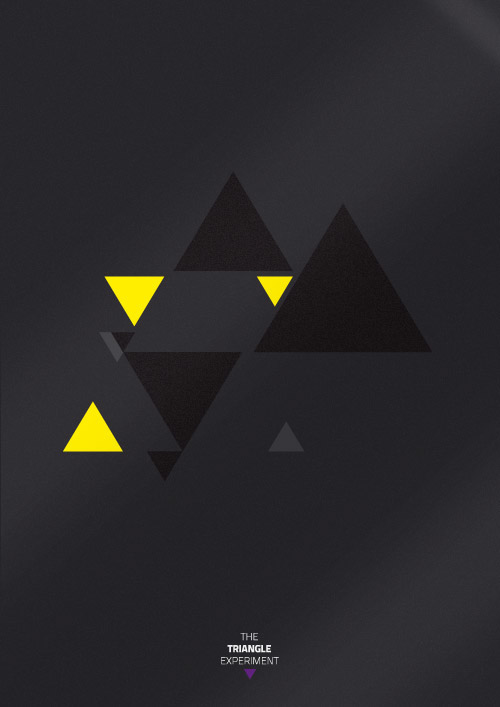
Dommiiinno can be compared to dominos, where one falling over hits another nearby, creating a knock-on effect. The physical characteristic of this is replaced with colour. Players, given a top-down view of geometry arrangements, have to change the colour of a particular shape - say a triangle in the middle of the arrangement, by touching another shape nearby, which changes it's colour and any adjacent shapes nearby, causing a knock-on effect. Players are scored by how intermediary shapes can be affected, before ending up at the target shape.
Control is through the 3D touch functionality of the iPhone. 3D touch allows players to 'test' out the effectiveness of particular shapes before committing. When a shape is selected, a temporary colour change on the selected shape is shown, along with a limited preview of how nearby shapes may be affected. Exerting harder down-pressure indicates commitment and causes the puzzle result to be carried out. Players are able to use this ability to deduct the best route to take.
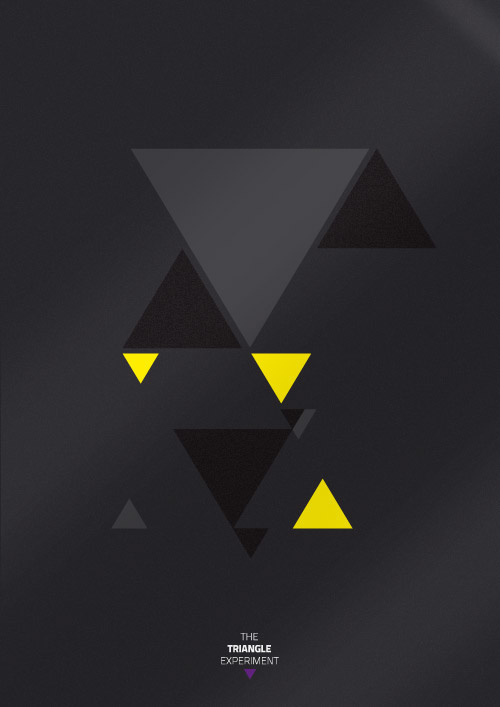
The level of effect is determined by the shapes' relative area. For instance, a tiny triangle will have no effect on a larger one, but a larger triangle will affect smaller shapes nearby. Shapes' adjacent sides determine proximity.
Dommiiinno is designed as beautiful and relaxing logic game, with no time constraints, and with the purpose of challenging a player's logical and deductive reasoning in a calm, tranquil environment.
Platform: iOS on newer iPhones with 3D touch capability.
Target Audience: General Audience.
Reference Images:
https://www.behance.net/gallery/The-Triangle-Exper...
Escalation is a touch-screen driven racing game for mobile devices, where players race to the finish line at the top of a 6-lane wide escalator.

You play as a salary-man late for work, which leads you to furiously switching lanes past obstacles (i.e. slow people who don't move aside on escalators). It is set in the future, with ridiculously long escalators like in the Jetsons, and to throw in a good measure of competition, you race against other late-for-work salary men and women.
Controls consist of two gestures:
Each level you play against three A.I. characters. The lanes are fantastically long and wind to and fro like a crazy 6-lane water slide. This purpose of arriving at the finish line first is done by choosing the most efficient route possible, switching lanes to avoid obstacles or when lane s converge, switching to a shorter route.
Lanes which run in the opposite direction may seem like the shorter route, but may have less obstacles, or link up to shortcuts. Furthermore, going the same direction as your opponents makes it difficult to overtake them. All this considered, a certain level of tactics is required on top of rapid-tapping.
On the screen U.I. there is a countdown clock, showing the minimum time you must reach the finish line before you are unavoidably late, which also serves as a method to measure a players score.
Platform: Mobile device Android and iOS.
Target Audience: General audiences.
Reference Image:
http://www.teelip.net/content/longest-escalator-in...
'Play Money' is a finance simulator based on the stock market. It is an introduction to trading for absolute beginners, simulating a simplified representation of stock price behaviour based primarily on (fictional) current events, and how the price of shares and money behaves in the finance eco-system.

Players begin the game with a certain amount of capital, and through making trades - 'buying' and 'selling' shares in certain companies, their goal is to maximize profits from their investments, and increase their capital. Time is accelerated by a factor of 1 day per minute in real-time.
The game U.I. consists of a large display of prices shown in real time of performance:
In the lower third of the U.I. shows text updates of current events, which the players use to predict changes in prices of companies.
Example:

Sees a sudden drop in Company X share prices, and steady rise of Corporation Y share prices.
The core game play components for players is simplified drastically into two key areas:
Platform: Social media API that can be played on mobile devices and desktop PC.
Target Audience: Adults.
Reference Image:
http://marhaba.qa/qp-announces-final-details-to-ip...
http://www.everafter.photography/
This is an iteration of the game, 'Jenga' by Milton Bradley, that is played between you and your flatmates (that are most probably all males) at times when there is a disagreement over who should do rubbish duty (taking out the trash, cleaning and relining the bin).
This..

Plus this..
Rubbish Jenga is inspired from the curious phenomena that occurs when a house full of flatmates encounter a full rubbish bin, and rather than doing everyone else a favour by emptying it out, instead choose to overstuff the bin by continuing to carefully balance another piece of trash top of the pile, like a pastry chef placing the bride & groom figurine on top of a wedding cake. This stems from the 'It's-not-full-until-something-falls-to-the-floor' rule, and results in an indoor, dome-shaped petri dish.
With the above serving as a prerequisite, Rubbish Jenga is called in to decide fair and square the person who suffers the penalty game.
The last person to use the rubbish bin starts of every game. The rule is that each player using only one hand (wearing no gloves, tongs, or any other protective gear) removes a piece of rubbish from the bottom (close to the lip of the bin), and places it at the very top of the pile. After the move has been made, 2 seconds must elapse before their turn ends, and the next turn begins.
Once a player touches a piece, the commitment-rule means the player must use that piece - no switching or replacing the piece to choose another. At this point, the player for the duration of their turn is not allowed to touch any other rubbish, or any part of the bin itself.
At no time are other players allowed to physically force another player into making an error. Doing so forfeits you the game. At any time, for health concerns or sympathy, a player is allowed to concede defeat.
The loser of the game is the player who, during their turn, has a piece of rubbish fall and hit the floor. The purpose of the game obviously is to avoid being this unlucky person.
Hard-core Level:
Any player who can balance a chosen piece of rubbish on their forehead for 10 seconds without it falling off is removed from the game, and considered exempt from penalty. The piece of rubbish used must by organic (i.e. Food).
Rubbish Jenga can be played with any number of people - including one person, if you really are that opposed to rubbish duty.
Platform: The kitchen floor.
Target Audience: Young adults flatmate, with a large sense of humour, and little regard for hygiene.
Reference Image:
http://www.escapethecity.co.uk/torquay-torquay-for...
https://north5.wordpress.com/2012/05/10/jenga-meth...
A single/ two-player 3D beat-em-up, where two angry giraffes are inside a ring, manoeuvring around and using their necks to battle it out, fight club style.
A player takes control of a giraffe, where you are then placed in the wild plains of the African Sahara, where your objective is to find, provoke, challenge, fight, and triumph against as many other like-minded angry giraffes as possible.
When encountering a new opponent, game screen overlays a boundary, and a countdown for the match to begin. The control uses a gaming controller:
The core mechanic of giraffe fighting involves the swinging of the neck to attack/ defend. Each giraffe has a health gauge. Every time you swing your neck or get hit, your exhaustion causes your health to decrease. The match ends when one giraffe's health is completely depleted, causing it to lose consciousness, leaving the remaining giraffe as the winner.
Every time your giraffe wins, one of their spots turns gold – thus making notoriety to other giraffes. This in-turn attracts more aggressive opponents. As a result, it is possible to end up with a completely golden, notorious, heavyweight fighting giraffe, that struts around dominating the Sahara.
Platform: Next-gen consoles – Xbox One, PlayStation 4, Nintendo Wii ϋ.
Target Audience: Teenagers 16 years and older (contains violence).
Reference Image:
http://www.businessinsider.com.au/fighting-giraffe...
A puzzle game for mobile device, where players solves challenges involving grouping dots of liquid together to form specific combinations of colours.

This is done by 'touching' and 'dragging' over a dot, pulling them along and grouping together with other dots to form larger dots. Each dot has a colour, which, like mixing watercolour paint, forms a different overall colour when combined. One 'move', is the period between your fingers touching, and lifting off the device.
You begin each level, given the particular pallet of colour required. Each level has different numbers and colours of dots. The goal of each level is create only the given pallet of colour, and in the least amount of moves possible. For instance, starting in a level with 12 blacks and given a pallet of 3 black dots, your goal is to touch and drag the 12 dots, combining them into 3 in the smallest amount of moves possible.
Colours follow the mixing formula of an RGB watercolour wheel. I.e. red and yellow dots mix to form orange, black dots will mix with everything, negating any other colour except white. Pulling a large enough dot too quickly causes the viscosity of the liquid to break into smaller dots, which can either be something the player tries to avoid, or done deliberately to break up large dots into smaller ones.
Starting off, players are taught the simple mechanics by mixing only like-colours together. This teaches the core game mechanics, and the basic skill required of controlling the speed of drag to control movement of dots, without contaminating colours.
Later on, the levels become more challenging, involving combining and breaking up dots which, in some cases must be done in a specific order and precision to achieve the high score. Other challenges involve avoiding colour contamination with an increasing number of dots - which motivates the player to also improve their control and understanding of the game mechanics.
Platform: Touchscreen mobile devices for Android and iOS.
Target Audience: General Audiences. Favoured audience: puzzle lovers.
Reference Image:
https://www.funpic.us/funny/dat_color-248/
A game involving stealth where the players identify and follow a target amongst a crowd. It requires the skill in observing human behaviour and discerning different reactions.

Players take the role of an undercover officer of the Stasi, given a photo of a person, which they must then identify in a crowd, and follow. They settings are based in environments involving large numbers of people - shopping malls, sport stadiums, public parks. The goal is to successfully follow a target within a certain proximity for a given length of time, without alerting of losing them - too far risks the target being lost, too close alerts the individual, scaring them off.
Added to this is the challenge of keeping inconspicuous to everyone within proximity. In this game world, everyone has an awareness of state surveilance being carried out, so tipping off a third party has a knock-on effect in alerting your target.
The equipment you have is a Geiger counter, which reacts when your target is nearby. This, alongside reading body language and social cues, comprise the tools used by the player to carry out tasks in this game.
Stasi Land is based off the book by Anne Funder, similar in name and theme. It details the objectives and mechanisms of the Ministry for State Security in Germany, known as the Stasi, up until the 1990 and the fall of the Berlin wall. Their modus operandi involved the protection of state secrets and national security. Much of the book discusses the psychosocial effects of Orwellian control and mass-surveillance.
The game uses a discussed technique discussed in the book, involving spraying irradiated liquid on a target, so they can be followed using a Geiger counter. The game mechanics are built largely upon NPC's showing behaviour that reflects theories of human behaviour in psychology. For example, the Hawthorne effect, proposing humans change their behaviour and body language when it is known they are being observed.
Platform: PC/ Mac
Target Age Group: Adults; Favoured audience: enthusiasts of history, political science, and sociology;
Reference Image:
https://gustos-personales.blogspot.co.nz/2015/05/l...
daily from
Post a comment